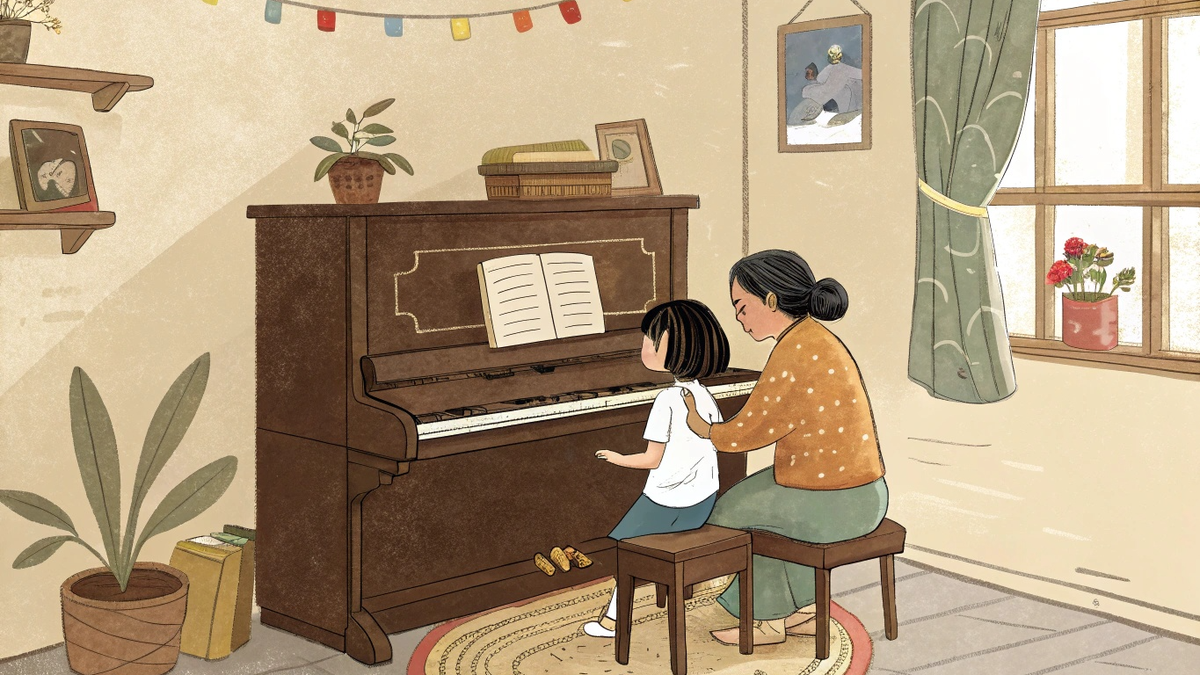Self-medication, failure to follow doctor’s instructions or ignoring warning symptoms can have dangerous consequences for your health. Understanding and avoiding these mistakes is an important step to effectively protecting your respiratory system.
Some mistakes in treating respiratory diseases can be dangerous to health.
Summer weather with its erratic fluctuations, along with the habit of excessive use of air conditioning, drinking ice water, bathing at night… is causing the rate of people suffering from respiratory diseases to increase rapidly.
 |
| Self-medication, failure to follow doctor's instructions or ignoring warning symptoms can cause dangerous health consequences. |
Cough is a common symptom that accompanies many diseases such as pharyngitis, tonsillitis, bronchitis, flu, or even more serious diseases such as pneumonia, bronchial asthma or tuberculosis.
One of the most common mistakes is to use drugs on your own, especially antibiotics, when you have symptoms of cough, fever, and sore throat. Antibiotics are only effective against diseases caused by bacteria, while many respiratory diseases are caused by viruses or other causes. Overusing antibiotics not only does not help cure the disease but also causes drug resistance, negatively affecting future treatment.
Many patients also abandon their treatment when they see their symptoms improve without following the doctor's instructions. This not only prevents the disease from being completely cured, but also easily leads to relapse or drug resistance, making treatment more difficult later.
In addition, subjectivity in not seeing a doctor promptly when symptoms persist or become severe is also the cause of the disease becoming more serious.
Signs such as persistent cough, difficulty breathing, and chest pain, if ignored, can lead to dangerous complications such as severe pneumonia or respiratory failure, even life-threatening.
Improper or incorrect use of medications can also cause many consequences. Using the wrong dose, at the wrong time, or combining inappropriate medications can reduce the effectiveness of treatment or cause side effects. Some medications need to be prescribed and closely monitored by a specialist to ensure safety and effectiveness.
Besides, instead of going to the doctor and getting proper treatment, many people still choose to listen to folk advice passed down by word of mouth, typically avoiding shrimp, crab, and fish when having a cough.
Regarding this mistake, according to Associate Professor, Dr. Nguyen Thi Hoai An, Director of An Viet Hospital, coughing is a natural and beneficial reflex of the body, helping to push foreign objects, bacteria, viruses or secretions out of the respiratory tract.
If the cough persists, especially for more than 5 days without improvement, or lasts more than 3 weeks, accompanied by signs such as fever, cough with green, yellow, rusty brown phlegm, coughing up blood, shallow breathing, chest pain when coughing, etc., the patient should go to a medical facility for early examination and diagnosis. These signs can be warning signs of serious illnesses that require timely treatment.
One of the common questions is whether or not people with coughs should avoid foods such as shrimp, crab, and fish. Many people believe that eating these seafoods will make the cough worse. However, according to Associate Professor, Dr. Hoai An, this view is not entirely correct.
In fact, shrimp or crab meat, if processed properly, does not cause cough. What makes patients susceptible to irritation is the shell or claw of shrimp or crab, if not cleaned and filtered carefully, small sharp pieces can get stuck in the throat, causing itching, damage and thereby stimulating the cough reflex. Therefore, patients can eat shrimp, crab, fish, but should choose the meat that has been peeled and filtered to ensure safety for the respiratory tract, especially during the time of sore throat or cough.
Similarly, the notion of avoiding fish when coughing also has no clear scientific evidence. Fish is not harmful to people with coughs if they do not have a history of seafood allergies.
On the contrary, fish is also a source of protein, omega-3, zinc and vitamin D, which are essential nutrients to support the immune system and restore health. However, it is important to pay attention to the preparation method: it should be thoroughly cooked, avoiding fried or overly spicy foods, as they can irritate the damaged throat lining.
In addition, people with coughs should also avoid foods and drinks that can increase the level of irritation of the respiratory mucosa such as spicy, hot foods, cold foods, ice, alcohol and tobacco. Keeping the neck warm, drinking enough water, adding green vegetables and fruits and resting properly will help the body recover faster.
Associate Professor, Dr. Hoai An recommends that coughing is a beneficial reaction but should not be taken lightly when the symptoms persist or are accompanied by abnormalities. Self-treatment or unfounded abstinence not only causes misunderstandings but sometimes also delays the recovery process.
When there are unusual signs, it is best for the patient to see an ENT or respiratory specialist for proper advice and treatment.
Cardiac spasm can lead to exhaustion and serious complications.
Ms. Linh, 31 years old, spent 7 days unable to eat or drink, constantly choking on food, exhausted due to severe achalasia, causing the esophagus to dilate to 7cm, nearly 5 times its normal size. This is one of the dangerous complications of achalasia, if not treated thoroughly, it can threaten the patient's health and life.
Previously, Ms. Linh was diagnosed with achalasia 7 years ago, a type of esophageal motility disorder that prevents food from passing from the esophagus to the stomach because the lower sphincter does not relax properly.
Despite undergoing two balloon angioplasty treatments, her condition relapsed. Recently, her condition worsened, she lost 5 kg in a short period of time, was unable to eat or drink, her body was exhausted and she had to go to the hospital for a check-up.
The results of the esophageal X-ray with contrast showed that her esophagus had dilated to 7 cm (normally only about 1.5 cm), and also recorded the stagnation of contrast and food in the esophagus.
High-resolution esophageal manometry (HRM) also showed severe abnormalities in the lower esophageal sphincter and esophageal motility.
Doctors concluded that she had severe type 2 achalasia and could not continue treatment with the previous balloon dilation method because the esophagus was too dilated, with a high risk of perforation or complications if attempted. POEM (oral endoscopic myotomy) was also not preferred in this case because the esophagus was too dilated, the surgery time was long, and there were many potential risks.
After consultation, Dr. Do Minh Hung, Director of the Endoscopy and Endoscopic Surgery Center, Tam Anh General Hospital, Ho Chi Minh City, prescribed Heller endoscopic surgery for the patient.
This is a surgical method through the abdomen, cutting the lower esophageal sphincter to release pressure and at the same time creating an anti-reflux valve to prevent postoperative complications.
During the surgery, the team discovered that the esophagus was dilated and the gastric balloon was stuck to the spleen - which was safely removed. After that, the doctors cut the esophageal sphincter 6 cm long and extended it 2 cm down to the stomach, preserving the mucosa and suturing to create an anti-reflux valve according to standard techniques.
After surgery, X-ray examination showed that the esophagus was no longer congested with water, the patient no longer had difficulty swallowing, could eat and drink again, and recovered quickly. Ms. Linh was discharged after only one day, with instructions to eat liquids for the first 5 to 7 days and gradually switch to a more solid diet.
Achalasia is a rare condition that belongs to the group of esophageal motility disorders. It occurs when the lower esophageal sphincter does not open properly to allow food to pass into the stomach, causing backflow, difficulty swallowing, vomiting, heartburn, chest pain, and weight loss.
The cause is still unknown, but may be related to genetic factors, infection, immune disorders, or degeneration of nerve cells in the esophageal plexus.
The disease is common in adults, especially middle-aged people, and needs to be diagnosed early for effective treatment, avoiding dangerous complications such as esophagitis, esophageal stricture, malnutrition or even cancer.
Treatment for achalasia depends on the severity of the disease and the condition of the esophagus. Treatment methods include muscle relaxants, endoscopic injections of botulinum toxin to relax the sphincter, balloon dilation or surgery. In severe cases like Ms. Linh's, surgery is the optimal choice to improve swallowing function and preserve the structure of the esophagus.
Doctors recommend that people with symptoms such as difficulty swallowing, persistent nausea, unexplained chest pain, and rapid weight loss should visit a specialized gastroenterology facility for examination, accurate diagnosis, and timely treatment. Early detection of the disease will help increase treatment effectiveness, reduce risks, and improve the patient's quality of life.
Advances in the treatment of hip bone tumors in children
A rare minimally invasive intervention has just been successfully performed at Hanoi Medical University Hospital, helping a 7-year-old girl escape from severe pain caused by a benign bone tumor in an extremely difficult location to intervene. This success not only opens up hope for similar cases, but also affirms the role of high technology in modern medicine in Vietnam.
The patient is a girl from Nghe An, who was healthy and normal until she started experiencing severe pain in her right thigh. The pain was especially severe at night, causing her to lose sleep and cry out in pain. “It hurts so much, Mom…” - the repeated cries every night made the young mother only know how to hold her child close, relying on painkillers to help her overcome each struggle.
The family took the child to many hospitals from provincial to central level. Finally, the doctors determined the cause was a benign bone tumor (osteoid osteoma).
The tumor, although only 5mm in size, was located in an extremely dangerous position, deep in the back and inside of the femoral neck, close to the hip joint, in the joint capsule area. If open surgery was performed to remove the tumor, there was a very high risk of damaging the blood vessels that nourish the bone, leading to femoral head necrosis, and even requiring hip replacement when the child was still too young.
Faced with that challenge, doctors at the Interventional Radiology Center, Hanoi Medical University Hospital, decided to choose a minimal intervention method using radiofrequency ablation (RFA) under the guidance of digital subtraction angiography (DSA) combined with cone-beam CT. This technology allows for precise tumor localization in three-dimensional space and delivers the burning needle to the correct position without damaging important surrounding structures.
Dr. Nguyen Ngoc Cuong, Head of the Interventional Radiology Department, who directly performed the intervention, said: “This is one of the most difficult cases we have ever performed. The tumor is located deep and close to the blood vessels that nourish the bone. If it deviates by just a few millimeters, it can cause joint bleeding, damage to the articular cartilage, or complications in the hip joint later on. All operations must be absolutely precise.”
The intervention lasted about 30 minutes, was performed gently and did not cause blood loss. Immediately after the procedure, the child only needed a single dose of pain medication. Less than 24 hours later, the child was able to leave the hospital, no longer in pain. The mother was moved to share in tears, thanking the doctors, after 6 months, the child was able to sleep peacefully without being awakened by pain.
The success of the intervention is not only the rapid recovery of a young patient, but also a testament to the remarkable development of Vietnamese interventional medicine in the treatment of complex bone and joint diseases.
Thanks to the application of high technology and the spirit of interdisciplinary coordination, many patients, especially children, have more opportunities to recover without having to suffer the consequences of major surgery.
Source: https://baodautu.vn/tin-moi-y-te-ngay-306-nhung-sai-lam-khi-dieu-tri-benh-ly-ho-hap-co-the-nguy-hiem-suc-khoe-d316995.html








![[Video] More than 100 universities announce tuition fees for the 2025–2026 academic year](https://vphoto.vietnam.vn/thumb/1200x675/vietnam/resource/IMAGE/2025/7/18/7eacdc721552429494cf919b3a65b42e)





















































































![[Infographic] In 2025, 47 products will achieve national OCOP](https://vphoto.vietnam.vn/thumb/402x226/vietnam/resource/IMAGE/2025/7/16/5d672398b0744db3ab920e05db8e5b7d)





Comment (0)